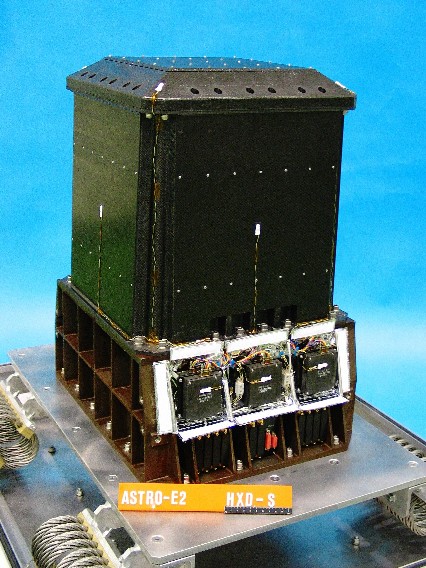Suzaku Special Exhibit
The Hard X-ray Detector
X-rays are famous for their ability to pass through objects, for example, human flesh. This ability, however, depends sensitively on the energy of the X-ray photons – the higher the energy, the better they are able to penetrate into objects. Astronomers refer to higher energy X-rays as "hard." So, the Suzaku instrument that measured higher energy X-rays, in this case between 10 and 600 keV or so, was called the Hard X-ray Detector (HXD). The HXD measures about 34 by 34 by 38cm.

The Suzaku Hard X-ray Detector. (Credit: NASA/ISAS/JAXA)
It is very difficult to focus high energy X-rays – even more difficult than lower energy X-rays (the XRTs used with XRS and XIS won't work). Instead, the HXD used a combination of detectors to measure X-rays from a source in the sky. One type of detector (made of a crystal called BGO) was used as a vertical shield, forming a series of "wells". Its purpose was to detect X-rays that don't come straight down the wells. At the bottom of the each well were two other types of detectors. At the very bottom was a detector called a GSO crystal, and above that was a detector called a Silicon PIN diode. The Silicon PIN detector was sensitive to X-rays with energies up to about 40 keV. At energies greater than this, X-rays passed through the Silicon PIN diode and were absorbed by the GSO crystal. The GSO crystal was sensitive to X-rays up to about 600 keV.
Any X-rays detected by the PIN and/or GSO, but not by the BGO, must have come stright down the well, and thus were coming from the object that the HXD was pointed at. X-rays that struck the walls of the well must have come from another direction, and the instrument electronics rejected them. This technique, called "active collimation," helped give the HXD very high sensitivity.
Published: July 2005
Text Reviewed: September 2018


